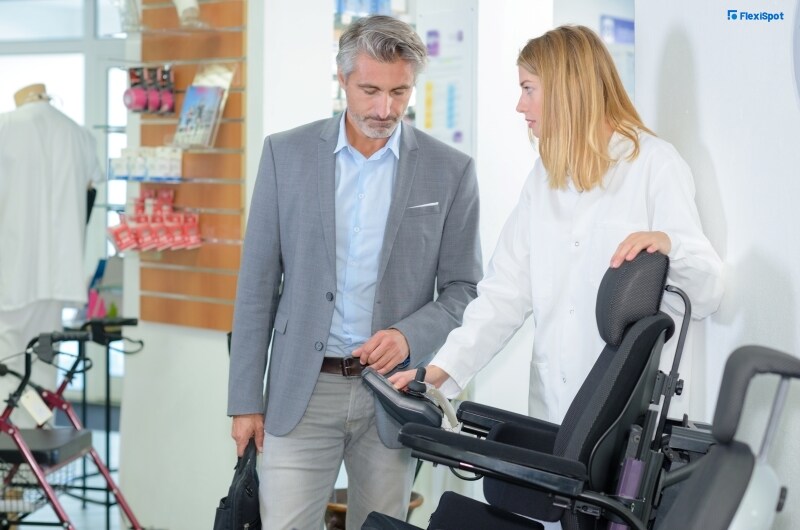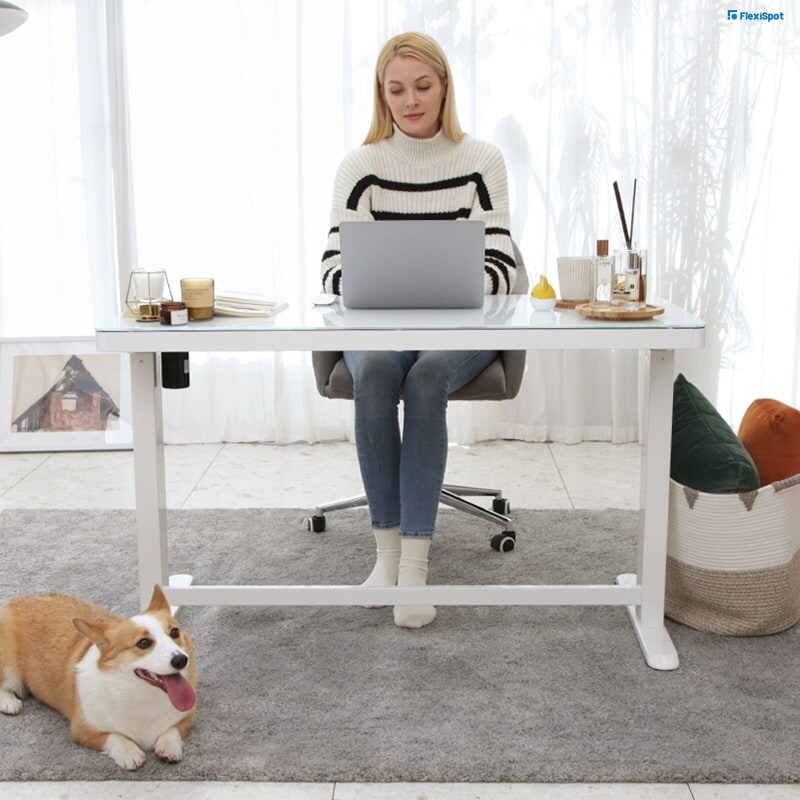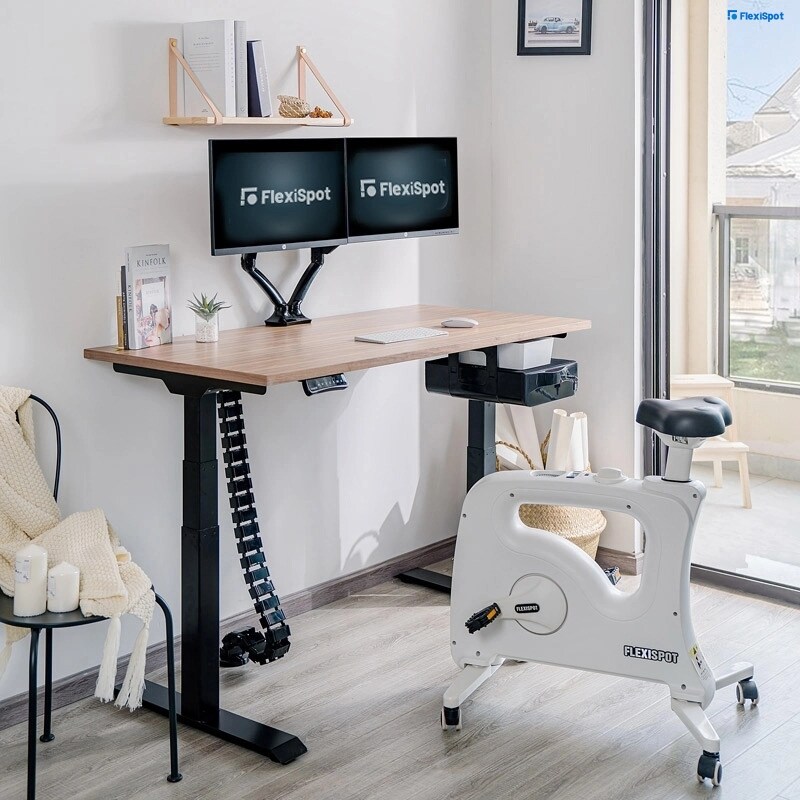The term "ergonomics" has gained popularity in the furniture sector. The majority of us see it in practically every piece of furniture, catalog, or billboard, but do we truly understand what it means? What advantages will an ergonomic chair give or will an ergonomic table provide, for instance? How could the furniture affect the dynamics of my workflow?
Ergonomics means the "rules of work," derives from the Greek words "ergon," which in English means "work," and "nomos," which means "natural laws." It is believed that this term was first used in 1857. It was utilized by Polish academic Wojciech Jastrzbowski for his book "An Outline of Ergonomics, or The Science of Work.”
However, it is thought that ergonomics existed long before the name was coined, back in the Ancient world. Drawings from the year 400 BC demonstrate that the Ancient Greeks were already creating chairs with movable armrests and curved back rests, which are also features of contemporary ergonomic furniture. Records also show Hippocrates discussing deliberate design to increase workplace effectiveness between 460 and 375 BC.

Other significant years for ergonomics include the 1890s, when Frederick Winslow Taylor used time and work measurements to assess workflow, and the 1900s, when Lilian and Frank Gilbreth used "Time and Motion Studies" to try to reduce the total number of movements necessary to complete a task. Ergonomics also had a role in the design of aircraft during World War I and in the development of weaponry during World War II that were intended to optimize human potential.
The Ergonomics Research Society, currently called as the Chartered Institute of Ergonomics and Human Factors, was founded in 1949 by physiologists and psychologists in the United Kingdom. In 1957, the US established its own organization in North America under the name Human Factors and Ergonomics Society. The demand for cognitive ergonomics increased in the 1970s as computers and software became the rage. And ever since computers were so successful in the 1980s and into the present, ergonomics has emerged as a way to improve workplace functionality and employee comfort.

Today's Ergonomics
The International Ergonomics Association (IEA), a federation of international ergonomic organizations, defines ergonomics or human factors as the profession that applies theory, principles, data, and methods to design in order to optimize human well-being and overall system performance.
Ergonomics is a multidisciplinary field that integrates research to design systems that are focused on the needs and desires of the user. It can be applied to a variety of economic sectors, industries, or application fields. An object must handle concerns relating to cognitive (perception, memory, reasoning, etc.), physical (human anatomy, physiology, anthropometrics), and organizational characteristics in order to be deemed ergonomic (participation, cooperation, socio-technical systems).
The IEA states that the fundamental basic values of ergonomics or human factors are: seeing people as assets, enhancing quality of life, using technology to help people, being accountable to all stakeholders, and respecting individual variations.

What Ergonomics Can Do for a Workplace
An ergonomic workplace promotes overall improved health among employees. Because eye strain is reduced, neck pain is treated, leg edema is addressed, and the body's blood circulation is at its best thanks to ergonomics, employees experience less stress.
The mind may think better when physical distractions are removed. Focus is improved, stress is decreased, mood is improved, and work productivity is increased thanks to ergonomics. Workplace productivity increases when employees are more concentrated.
A happier workforce also guarantees better work in general.
Ergonomics may first seem expensive, but in the long run, both the business and the individual can benefit financially. By implementing ergonomic solutions, daily risks and even severe health issues can be avoided.

The Role of Ergonomics in the Pandemic
Ergonomics even spread farther after COVID-19 struck and shut down all global activities. Although employees were told to work from home in the interim, no one could have known how long the pandemic would last. Many businesses have learned that remote work may be a feasible option for their operations as a result of the extended period of working from home. Employees had to deal with several challenges, including the fuzziness of the distinction between work and rest.
Ergonomics saved the day. It was used by many businesses and people to maintain and enhance productivity even in work-from-home environments.
The workspace has to meet the requirements for lowering physical discomfort and pain from lengthy periods of sitting while boosting productivity and effectiveness.

An ergonomic brand for more than 20 years, FlexiSpot
Without a doubt, FlexiSpot is a top supplier of ergonomic furniture. It offers a wide range of goods and services that reimagine workplace well-being, love, and care.
The company has managed the spine health of 10 million people thanks to its 20 years in the ergonomics sector. FlexiSpot has been used by more than a thousand businesses to help employees.
Prolonged sitting is a daily sedentary routine for office workers. Due to this, FlexiSpot offers high-quality solutions for height-adjustable standing workstations that can assist workers in switching between standing and sitting positions throughout the course of the workday. Additionally, the business sells standing desk converters that may be used to immediately modify a workstation, elevating work areas to encourage standing and sitting shifts while also enhancing posture.
The V9 Pro Home Office Height Adjustable Cycle Desk Bike from FlexiSpot is a high-quality desk bike that keeps the body and mind active and awake.
Simply said, Flexispot is a one-stop destination for any business or employee looking to maximize ergonomics for staff members to be more effective and productive in the office setting. The cost may seem high to some people, but the investment is unquestionably worthwhile. It pays for a high quality of life that enables a dynamic between work and social life that is more evenly balanced. Since Flexispot products are robust, its clients can use them for many years without experiencing any damage or failure. The majority of customers return to buy additional FlexiSpot products to further improve the ergonomics of their workspaces rather than replacing existing FlexiSpot items.

